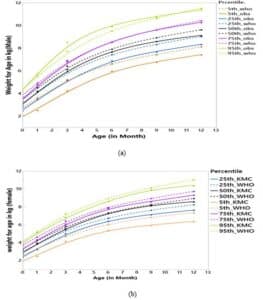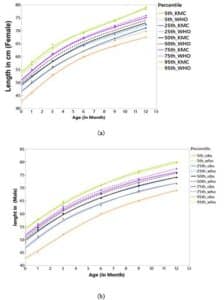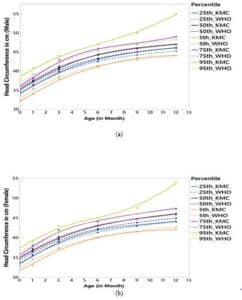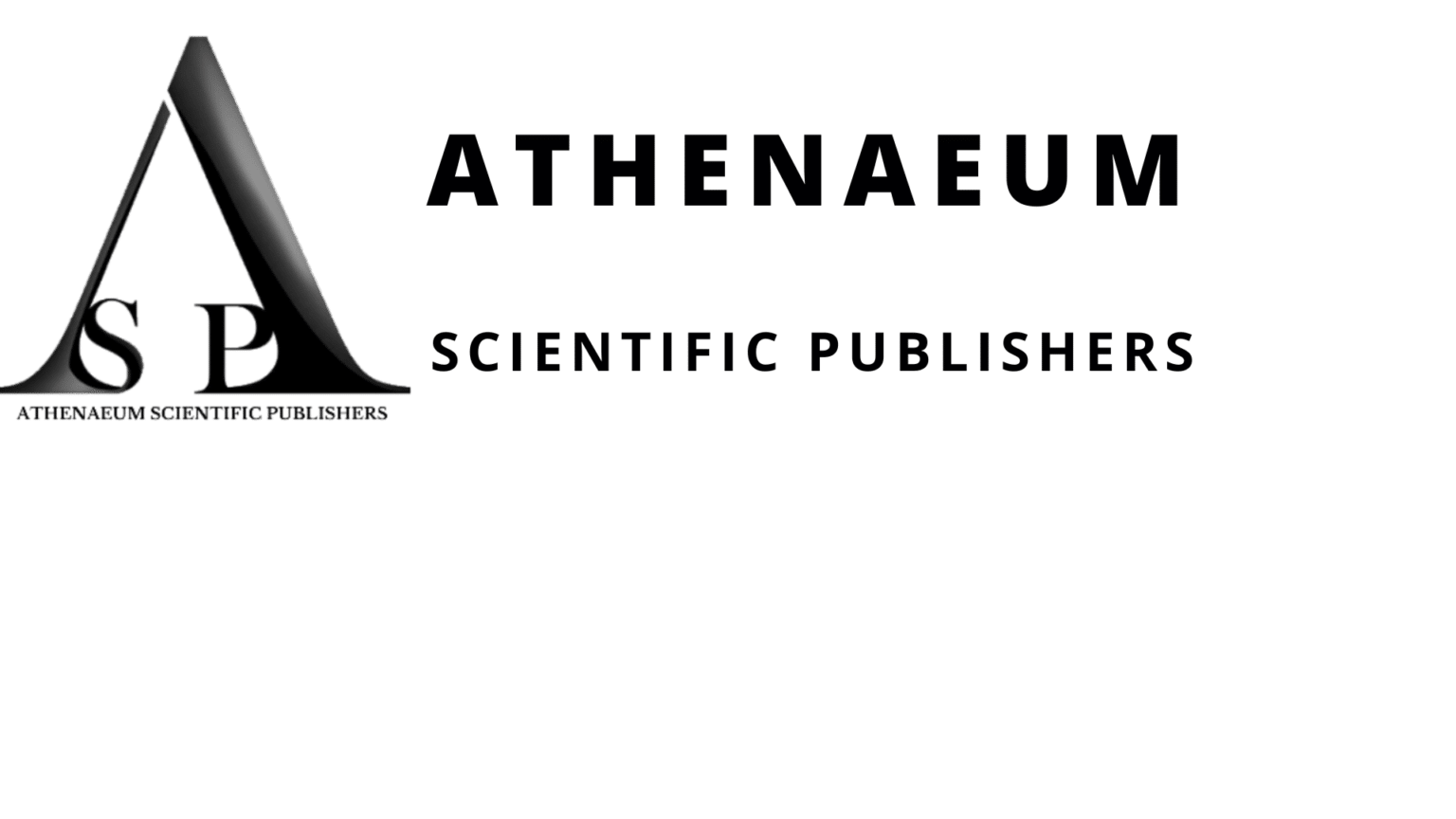Andreas Chiabi1*, Alex Mambap Tatang1,2, Victorine Moli1, Flore Nguemaïm Ngoufo1, Kate Kan1, Samuel Angwafor1,2, Eveline Feuldi2, Frida Sunjo2, Denis Nsame Nforniwe2
1Faculty of Health Sciences, The University of Bamenda, Cameroon
2Regional Hospital Bamenda, Cameroon
*Corresponding Author: Andreas Chiabi, Faculty of Health Sciences, The University of Bamenda, Cameroon; Email: [email protected]
Published Date: 29-09-2022
Copyright© 2022 by Chiabi A, et al. All rights reserved. This is an open access article distributed under the terms of the Creative Commons Attribution License, which permits unrestricted use, distribution, and reproduction in any medium, provided the original author and source are credited.
Abstract
Background: Kangaroo Mother Care (KMC) is a cost-effective intervention for the management of low birth weight babies in resource-limited settings such as Cameroon. Outcome data on babies followed through this intervention have been scarce since the implementation of the KMC programme in the Regional Hospital of Bamenda (RHB), North West region of Cameroon.
Objectives: This study aimed at assessing growth, morbidity and outcome of neonates in the Kangaroo Mother Care (KMC) at the Regional Hospital Bamenda, Cameroon.
Methods: It included 132 neonates with a birth weight of <2500 g who received KMC and followed up after discharge from 40 weeks post-conception, then 1, 3, 6, 9 and 12 months of age. Motor development was evaluated using the Infant Neurological International Battery (INFANIB) test.
Results: Weight and height followed the same pattern as for term new-borns on the World Health Organization (WHO) curves. The same pattern of growth for head circumference was noted except at 6 months in boys and 9 months in girls, where an acceleration at the 95th percentile was observed. The three most common morbidities observed were upper respiratory tract infections (46.96%), diaper rashes (15.91%) and abdominal infant colics (9.85%). Neurological evaluation was appropriate when compared with WHO standards.
Conclusion: Growth and neurological evaluation was appropriate and comparable with WHO references and few morbidities were noted.
Keywords: Kangaroo Mother Care; Neonates; Growth; Outcome; Cameroon
Introduction
Neonatal mortality refers to death of a newborn per 1000 live births within the first 28 days of life and is a public health problem, particularly in developing nations where resources are few [1,2]. The global death rate in the first month of life is 17 deaths per 1000 births majority of these occurring in sub-Saharan Africa with the burden in Cameroon estimated at 26.1 deaths per 1,000 live births in 2019 [3-5]. Prematurity is the leading cause of neonatal morbidity and mortality worldwide with a much lower rate in resource rich countries compared to resource limited countries. Other causes include congenital malformations, birth asphyxia and infections among others [6,7]. Limited resources with increased prevalence of premature deliveries worldwide especially in developing countries makes care of babies challenging thus there is need for readily available and affordable methods and interventions in these countries to improve preterm survival and improve long term outcome. Kangaroo Mother Care (KMC) which is accessible to all may be an important technique to breach this gap. KMC easy to perform, cheap, non-sophisticated, requires no special skills and available to all [8].
Many studies on KMC have highlighted its effects in reducing Low Birth Weight (LBW) problems like: infant mortality; hypoglycemia by promoting regular breast-feeding; hypothermia through temperature regulation, lowering the risk of infection by minimizing hospitalization stay, improving psychomotor development, increased weight gain and length, cognitive development, regularized sleep patterns, as well as a better sense of mother-to-baby motherhood, which improved emotional bonding between mothers and newborns [6,8-10]. In Cameroon, precisely in the North West Region, its implementation shows the reduction of neonatal mortality with a prevalence of 70% [10].
Objectives
We sought to evaluate the morbidity and growth of the neonates admitted in the KMC in the Kangaroo mother care follow-up program from 40 weeks to 12 months corrected age after discharge from neonatal care unit of the RHB.
Methods
Study design, setting and population
This study was a hospital based retrospective descriptive cohort study conducted in the kangaroo unit of the Regional Hospital of Bamenda (RHB), a level III hospital in Cameroon and a teaching hospital for the Faculty of Health Sciences of the University of Bamenda and other private medical and paramedical schools. It included 132 LBW babies weighing <2500 g followed through the KMC program. The study period was from January 2016 to March 2020.
Inclusion Criteria
All LBW discharged alive from the neonatal care unit at 40 weeks gestational age post-conception and who were followed up through the kangaroo mother care program up to one year of age during the study period.
Exclusion Criteria
The LBW patient with large malformation or early severe medical conditions, patients with uncompleted files or those who were lost to follow-up and those who relocated to other towns or seen at other hospitals.
Ethical Considerations
Ethical clearance was obtained from the Institutional Review Board (IRB) of the Faculty of Health Sciences of the University of Bamenda and an administrative authorization to carry out the research in the North West Region was obtained from the North West Regional Delegation of Public Health. An administrative authorization to carry out the research at the Neonatology Units of the RHB was also obtained from the Director of the hospital.
Data Collection
Data collection was obtained by filling pre-structured questionnaire which included socio-demographic and obstetrical information of the mothers, demographic data, anthropometric measurements, main complaints of the babies were recorded at 40 weeks, 1, 3, 6, 9 and 12 months and the motor development assessment by use of the infant neurological battery test (INFANIB) were evaluated at 3, 6, 9 and 12 months of appointment and recorded.
Statistical Analysis
Data was entered into Microsoft Office Excel version 12 and analysis was done using SPSS (Statistical Package for the Social Sciences) version 21. Excel Statistics including frequency, percentage and means were done at confidence interval of 95%. The curves were obtained using SASGML and were compared to the WHO growth curves for term infants. A p-value <0.05 was considered statistically significant.
Results
Characteristics of the study population
The 132 participants constituted of 53% females and 47% males with more than half (56.1%) of the population born between 32 and 42 weeks of gestation. The mean birth weight was 842.45 (extremes: 840 – 2480) grams with majority of participants (84%) weighing between 1500 and 2480 grams (Table 1).
|
Variables |
Frequency |
Percentage |
|
Gestational age (weeks) |
||
|
<28 |
3 |
2.3 |
| [28-32] |
26 |
19.7 |
| [32-37] |
74 |
56.1 |
| [37-42] |
29 |
22.0 |
|
Total |
132 |
100 |
|
Weight (grams) |
||
|
<1000 |
2 |
1.5 |
| [1000-1500] |
18 |
13.6 |
| [1500-2500] |
112 |
84.8 |
|
Total |
132 |
100 |
Table 1: Distribution of the neonates according to gestational age and birth weight.
Assessment of physical and neurological growth, morbidities in the study population
During follow-up consultations, the common morbidities observed were upper respiratory tract infections (46.96%), followed by diaper rashes (15.91%), abdominal infant colics (9.85%), fever (9.09%), hernia (3.03%), diarrhea (2.27%) and urinary tract infections (2.27%).
Table 2 shows that, the mean weight for males was 2906 g and 9792 g at 40 weeks and 12 months respectively. When compared to the WHO references, the KMC neonates were smaller at 40 weeks corrected age and by 1 year, they weighed more than WHO term infants. The female mean weight was 2758 g and 8507 g at 40 weeks corrected age and 12 months respectively which was smaller than there WHO terms counterparts. The difference in weight observed among both sexes was significant (p< 0.05).
The lengths of males at 40 weeks were different from the WHO by 1.28 cm at 40 weeks and by 1.14 cm at 12 months of age while in females, we observed a difference of 1.03 cm at 40 weeks and 0. 81 cm at 12 months whereas the HC measurements of both the males and females were greater than the WHO term infant values (Table 2).
|
Variables |
Mean KMC* |
Mean WHO** |
|
Males at 40 weeks corrected age |
||
|
Weight |
2900.48 |
3346.4 |
|
Head circumference |
35 |
34.46 |
|
Length |
48.6 |
49.88 |
|
Female at 40 weeks corrected age |
||
|
Weight |
2758.07 |
3232.2 |
|
Head circumference |
34.47 |
33.87 |
|
Length |
48.11 |
49.14 |
|
Male at 12 months corrected age |
||
|
Weight |
9792.5 |
9647.9 |
|
Head circumference |
48.1 |
46.75 |
|
Length |
74.6 |
75.74 |
|
Female at 12 months corrected age |
||
|
Weight |
8507.9 |
8948.1 |
|
Head circumference |
46.6 |
44.89 |
|
Length |
73.2 |
74.01 |
|
*KMC: Kangaroo Mother Care; **WHO: World Health Organization |
||
Table 2: Baseline anthropometric measurement of the neonates according to sex at 40 weeks and 12 months of age (N=132).
|
Age |
Results |
Frequency (n) |
Percentages (%) |
|
3 months (N=103) |
Normal |
87 |
84.5 |
|
Transient |
16 |
15.5 |
|
|
6 months (N=100) |
Normal |
93 |
93 |
|
Transient |
7 |
7 |
|
|
9 months (N=95) |
Normal |
90 |
94.7 |
|
Transient |
4 |
4.2 |
|
|
Abnormal |
1 |
1.1 |
|
|
12 months (N=99) |
Normal |
96 |
97 |
|
Transient |
3 |
3 |
|
|
*Infant Neurological International Battery |
|||
Table 3: Neurologic assessment using INFANIB* (N=132).
Weight for males and females
The variation of weight followed the pattern of the WHO curves all through the follow-up period except those at the 5th and 95th percentiles which remained largely below and above the WHO corridors respectively. The same pattern was noted in females except for those who were below the 5th percentile at onset which remained largely below the 5th percentile all through (Fig. 1).
Length for males and females
The average length increase among male neonates were 2.13 cm/month and 2.07 cm for female. The variation of length for both sexes followed the pattern of the WHO curves all through the follow-up period except those who were below the 5th percentile at onset who remained largely below the 5th percentile all through (Fig. 2).
Head circumference for boys and girls
The male head circumferences were increasing at 1.1 cm per week and in females, 0.9 cm averagely. The variation of head circumference for boys and girls followed the WHO curves all through the follow-up except those who were above the 95th percentile at onset who remained largely above the 95th percentile with a sharp upward skew at 6 months and 8 months observed in males and females respectively (Fig. 3).
Neurological assessment
Table 3 shows a good and improving neurological performance, using the INFANIB scale, at all stages of follow-up, except at 9 months of age when 1.1% of the neonates had abnormal findings.

Figure 1: Projection of weight changes in males (a) and females (b) during KMC follow-up compared with the WHO weight reference curves. (KMC: Kangaroo Mother Care; WHO: World Health Organization).

Figure 2: Projection of length changes in males (a) and females (b) during KMC follow-up compared to WHO length reference curves.

Figure 3: Projection of head circumference changes in males (a) and females (b) during KMC follow-up compared to WHO head circumference reference curves.
Discussion
Most males by 1 year of age on the KMC program had catch up weight that exceeded that of those on the corresponding WHO references, while the females had a slower growth and did not catch up with age- matched on the curves. Female infants failure to catch up, contrary to males concords with findings of Kang, et al., in China and Mah, et al., in Yaounde [11,12].
Our study showed progressive increase in the length of both male and female babies, as observed by Han, et al., [13]. The rapid growth in preterm infants could be explained by the more care and nutritional supplements given to preterm infants by their parents.
Head circumference has been considered to be one of the most important growth parameters in babies, as it is a reflection of the underlying brain growth and a determinant of neurodevelopment [14]. In our study, the increase of head circumference in both sexes, was progressive and indicative of adequate brain growth. The variations noticed could be explained by possible sex differences, birth weight for the gestational age (which has a significant independent additional effect on the head size), genetic factors and the diet.
Most of the children had good neurological assessment parameters contrary to findings of Liao, et al., who noted abnormal scores suggesting neurological delay [15]. However, our findings were consistent with those of Charpak, et al., who noted that the KMC neonates, had slightly less severe abnormal neurologic results [16].
Our finding of upper respiratory tract infections as the commonest illness persisting throughout the first year of life, followed by diaper rashes, infantile colics, among other morbidities is similar to the reports of Frietas, et al., in Brazil who also noted respiratory tract infections as the most prevalent diagnosis in outpatient visits during the first year of corrected age [17]. Mah, et al., in Yaounde also had comparable findings with respiratory tract infections being most common causes of re-admissions [18]. These similarities can be explained by the fact that premature children have an increased risk to such infections, due to their weak immune system and also upper respiratory tract infections are the most common causes of infant morbidity [19]. In addition, environmental variables like the North West climate which is very cold all through the year and the overcrowding in houses as we have observed a significant urban migration could account for the high occurrence of respiratory infections [20].
Diaper dermatitis as the second most common cause of outpatient consultations in our study is in consonant with the observations of Adalat, et al., in Birmingham [21]. We noticed that the periodicity declined with the child’s growth until the age of 12 months old where it was no longer observed. This is contrary to the findings of Li, et al., in China who found the prevalence of diaper dermatitis to have increased with infant age across all age groups but was significantly lower in children aged 1 to 6 months [22]. Contributing factors of diaper rash include infant maturity, diet, intestinal Candida albicans, frequency and duration of contact between the skin and stools of the infant [23].
Conclusion
Infants on the KMC program in Cameroon showed good growth anthropometric trends, when compared with WHO references, from infancy to one year, as well as proper neurological development. Respiratory tract disorders, diaper rashes and infantile colics were the most common morbidities in these infants.
Acknowledgements
We are grateful to the staff of the KMC unit of the Regional Hospital Bamenda for their technical assistance and taking care of the babies.
Ethical Approval
Ethical clearance was obtained from the Institutional Review Board (IRB) of the Faculty of Health Sciences of the University of Bamenda (2021/056H/UBa/IRB) and an administrative authorization to carry out the research in the North West Region was obtained from the North West Regional Delegation of Public Health.
Conflict of Interest
The authors have no conflict of interest to declare.
References
- World Health Organization. Newborn death and illness. WHO 2021. [Last accessed: 19 September 2022]. https://www.who.int/PMNCH/media/press_ materials/newborn death illness/
- Yasmin S, Osrin D, Paul E, Costello A. Neonatal mortality of low-birth-weight infants in Bangladesh. Bull World Health Organ. 2001;79(7):608-14.
- United Nation Children’s Fund. Neonatal mortality. UNICEF data. 2021. [Last accessed: 19 September 2022].
https://data.unicef.org/topic/child-survival/neonatal-mortality/
- World Health Organization. Newborns: improving survival and well-being. WHO 2020. [Last accessed: 19 September 2022]. https:// www.who.int/news-room/fact-sheets/detail/newborns-reducing-mortality/
- Cameroon Neonatal mortality rate, 1960-2020 – knoema.com. Knoema. [Last accessed: 19 September 2022]. https://knoema.com//atlas/Cameroon/Neonatal-mortality-rate/
- Lawn J, Mwansa-Kambafwile J, Horta L, Barros F, Cousens S. Kangaroo mother care to prevent neonatal deaths due to preterm birth complications. Int J Epidemiol. 2010;39:144-54.
- Mah E, Chiabi A, Tchokoteu PF, Nguefack S, Bogne J, Siyou H, et al. Neonatal mortality in a referral hospital in Cameroon over a seven year period: trends, associated factors and causes. Afri Health Sci. 2014;14:517-25.
- Saputri H, Ernawati D, Mufdlilah. The effectiveness of kangaroo mother care on premature babies: A scoping review. Proceeding Conference. 2019;1:257-67.
- Mazumder S, Upadhyay R, Hill Z, Taneja S, Dube B, Kaur J, et al. Kangaroo mother care: using formative research to design an acceptable community intervention. BMC Public Health. 2018;18:307.
- Ngonkala ML. Impact of KMC on preterm babies and outcome at the Regional Hospital of Bamenda. Bamenda, North west Cameroon: University of Bamenda. 2019.
- Kang L, Wang H, He C, Wang K, Miao L, Li Q, et al. Postnatal growth in preterm infants during the first year of life: A population-based cohort study in China. PLoS One. 2019;14:e 0213762.
- Mah E, Chiabi A, Chetcha A, Nguefack S, Dongmo F, Tetanye E, et al. Evaluation of short-term growth in very low birth weight preterm infants at a tertiary hospital in Cameroon. J Clin Neonatal. 2016;5:247.
- Han J, Jiang Y, Huang J, Zhang Y, Zhang Y, Zhang Y, et al. Postnatal growth of preterm infants during the first two years of life: catch-up growth accompanied by risk of overweight. Ital J Pediatrics. 2021;47:66.
- Hayden-Wade H, Leslie LK. Children: Stages of Development and Growth. Encyclopedia of Forensic and Legal Medicine. 2005;325-38.
- Liao W, Wen E, Li C, Chang Q, Lv K, Yang W, et al. Predicting neurodevelopment outcomes for at-risk infants: reliability and predictive validity using a Chinese version of the INFANIB at 3, 7 and 10 months. BMC Pediatrics 2012;12:72.
- Charpak N, Tessier R, Ruiz JG, Hernandez JT, Uriza F, Villegas J, et al. Twenty-year follow-up of kangaroo mother care versus traditional care. Pediatrics. 2017;139.
- Freitas M, Siqueira A, Segre C. Follow-up evaluation of children with birth weight less than or equal to 2,000 g. Sao Paulo Med J. 2004;122:239-45.
- Mah E, Monono N, Tague D, Nguefack S, Nkwele I, Ngwanou D, et al. Post discharge outcome of preterm infants in a low-middle-income country. Pediatr Oncall J. 2021;18:37-41.
- Drillien C. Growth and development in a group of children of very low birth weight. Arch Dis Child. 1958;33:10-8.
- Pramana I, Latzin P, Schlapbach L, Hafen G, Kuehni C, Nelle M, et al. Respiratory symptoms in preterm infants: burden of disease in the first year of life. Eur J Med Res. 2011;16:223-30.
- Adalat S, Wall D, Goodyear H. Diaper dermatitis‐frequency and contributory factors in hospital attending children. Pediatr Dermatol. 2007;24:483-8.
- Li C, Zhu Z, Dai Y. Diaper dermatitis: a survey of risk factors for children aged 1 – 24 months in China. J Int Med Res. 2012;40:1752-60.
- Jordan W, Lawson K, Berg R, Franxman J, Marrer A. Diaper dermatitis: frequency and severity among a general infant population. Pediatr Dermatol. 1986;3:198-207.
Article Type
Research Article
Publication History
Received Date: 01-09-2022
Accepted Date: 22-09-2022
Published Date: 29-09-2022
Copyright© 2022 by Chiabi A, et al. All rights reserved. This is an open access article distributed under the terms of the Creative Commons Attribution License, which permits unrestricted use, distribution, and reproduction in any medium, provided the original author and source are credited.
Citation: Chiabi A, et al. Growth, Morbidity and Neurological Outcome of a Cohort of Neonates in a Kangaroo Mother Care Program, in a Regional Hospital in Cameroon. J Pediatric Adv Res. 2022;1(1):1-8.

Figure 1: Projection of weight changes in males (a) and females (b) during KMC follow-up compared with the WHO weight reference curves. (KMC: Kangaroo Mother Care; WHO: World Health Organization).

Figure 2: Projection of length changes in males (a) and females (b) during KMC follow-up compared to WHO length reference curves.

Figure 3: Projection of head circumference changes in males (a) and females (b) during KMC follow-up compared to WHO head circumference reference curves.
Variables | Frequency | Percentage |
Gestational age (weeks) | ||
<28 | 3 | 2.3 |
| [28-32] | 26 | 19.7 |
| [32-37] | 74 | 56.1 |
| [37-42] | 29 | 22.0 |
Total | 132 | 100 |
Weight (grams) | ||
<1000 | 2 | 1.5 |
| [1000-1500] | 18 | 13.6 |
| [1500-2500] | 112 | 84.8 |
Total | 132 | 100 |
Table 1: Distribution of the neonates according to gestational age and birth weight.
Variables | Mean KMC* | Mean WHO** |
Males at 40 weeks corrected age | ||
Weight | 2900.48 | 3346.4 |
Head circumference | 35 | 34.46 |
Length | 48.6 | 49.88 |
Female at 40 weeks corrected age | ||
Weight | 2758.07 | 3232.2 |
Head circumference | 34.47 | 33.87 |
Length | 48.11 | 49.14 |
Male at 12 months corrected age | ||
Weight | 9792.5 | 9647.9 |
Head circumference | 48.1 | 46.75 |
Length | 74.6 | 75.74 |
Female at 12 months corrected age | ||
Weight | 8507.9 | 8948.1 |
Head circumference | 46.6 | 44.89 |
Length | 73.2 | 74.01 |
*KMC: Kangaroo Mother Care; **WHO: World Health Organization | ||
Table 2: Baseline anthropometric measurement of the neonates according to sex at 40 weeks and 12 months of age (N=132).
Age | Results | Frequency (n) | Percentages (%) |
3 months (N=103) | Normal | 87 | 84.5 |
Transient | 16 | 15.5 | |
6 months (N=100) | Normal | 93 | 93 |
Transient | 7 | 7 | |
9 months (N=95) | Normal | 90 | 94.7 |
Transient | 4 | 4.2 | |
Abnormal | 1 | 1.1 | |
12 months (N=99) | Normal | 96 | 97 |
Transient | 3 | 3 | |
*Infant Neurological International Battery | |||
Table 3: Neurologic assessment using INFANIB* (N=132).


